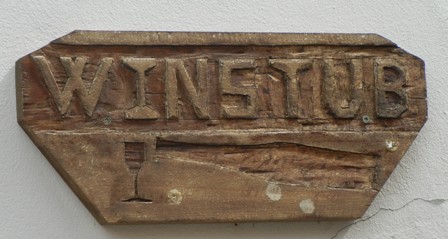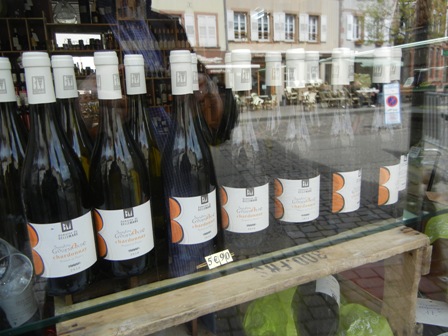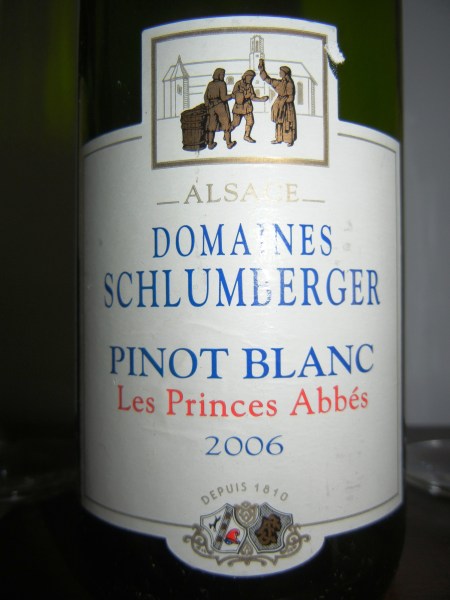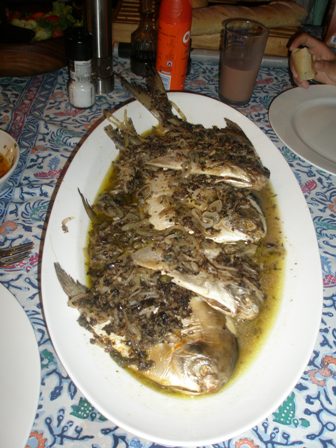Canal in Strasbourg
Strasbourg in autumn is very picturesque, and a great place to visit. I was lucky that I had to attend a conference and therefore had the chance to be there for a few days last year in early November.
I love this city and the wine region surrounding it: Alsace is one of my favourite French wine region. I especially love their whites, among them Riesling, Gewuerztraminer and Pinot Blanc and the Pinot Noir.
S’Thomas Stuebel
Since I was a day early for the event, I used the Sunday afternoon for a stroll to explore the town. I had visited before. Actually my first visit was when I attended high school (or as we call it Gymnasium). Since I was in the “French branch” of my school, we went quite frequently to various places in France. We stayed at a youth hostel. Our teacher made us try some of the local wines. It was here in Strasbourg that I tasted my first Gewuerztraminer.
I was eager to visit one of the famous wine bars. Unfortunately, the S’Thomas Stuebel was closed on Sundays. I promised to come back another day. Which I did.
The name plate at the entrance promised a truly indigenous dining experience. Something earthy, something traditional, something authentic with special dishes from the region and local wines.
The guest chamber of the wine bar
I was not to be disappointed when I cam back a few days later on the last day of my Strasbourg visit. Together with a colleague, we intended to explore the culinary delights of the Alsace wine region. We longed for simple, peasant type of food and nothing fancy.
A white wine served in an earthen flagon
Since my friend does not drink alcohol, a bottle was out of the question. Therefore, I ordered a 1/2 ltr. which was served in an earthen flagon. I selected a local Pinot Blanc.
The assorted Alsatian dishes
As you can see from the photo above, we went for very basic, nutritious and hearty local food. The potatoes with ham were wonderful. The cottage cheese with garlic and onions was creamy and rich. The salads contained all the garden greens typical for the season.
Crème brûlé
I am not a big fan of deserts, but the crème brûlé on the menue I was not willing to miss out on. I did not regret my choice. A fruit schnaps was used to make the crème brûlé, make it burn.
When we left, the taproom was filled with local diners. If you should visit Strasbourg you should not miss the S’Thomas Stuebel. Have dinner there and enjoy the local cuisine and the excellent selection of Alsatian wines.
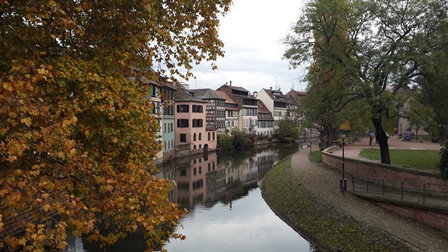

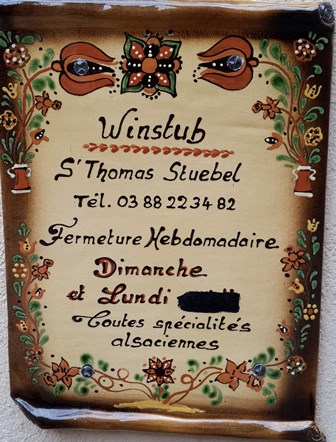

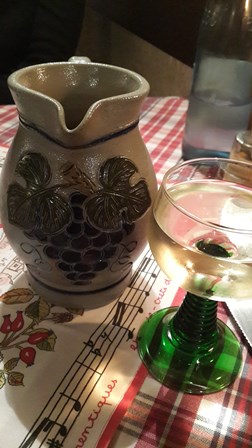
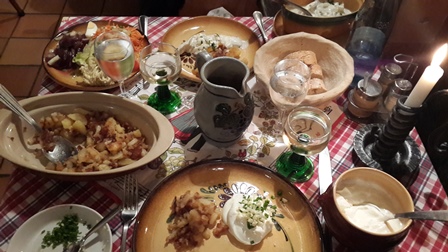




 Posted by themanfrommoselriver
Posted by themanfrommoselriver 









